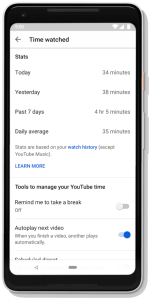How do you create content that performs? It’s all about implementing an account-based content strategy, says columnist Rachel Balik. She explains what you need to know.

Content marketing continues to be one of the most hyped — and most misunderstood — elements of digital marketing. Many imagine that it will be a cure-all for a whole host of marketing, sales and branding issues in an organization. In reality, your content marketing will likely mirror or amplify any organizational issues.
As a result, content programs often don’t meet goals and lose momentum. Most companies feel obligated to do content marketing and allow their programs to stumble along, which consumes a great deal of time and energy but yields a comparably small reward. Ultimately, problems in content marketing are just a symptom of a larger problem in general marketing: lack of focus on the right audiences.
Today, many companies are beginning to remedy that marketing problem by implementing Account-Based Marketing across the entire lifecycle. Since content is always in the spotlight, it’s essential to begin building an account-based philosophy into your content strategy. Once you do that, you’re on you’re way to having a real strategy — and creating content that truly performs.
Identify Your Key Pillars
To effectively plan, develop and measure a content strategy, you need to know three things: Who your audience is, what types of content you’ll serve them, and how you want to them to interact with that content.
For analytics purposes, we can describe those three things succinctly as visitor segments, content groups and website goals. You want to determine what types of content each segment sees, then measure how they interact with it.
At first glance, that may seem similar to what you’re already doing with content. What’s different is that you’re making all your decisions based on specific accounts and segments. That’s how you finally break through the noise — and the mediocrity.
Define Account-Based Visitor Segments
“I think one of the reasons content marketing doesn’t work is because companies don’t do proper audience development,” Content Strategist Emma Siemask told me via Facebook. “They don’t really know who they’re writing to, and that makes it impossible to define what types of content will work.”
Ultimately, content needs to start a conversation that sales will finish, which means it needs to align with the interests of prospects. The sales team sells to accounts, so it follows that your content should be created with account audiences in mind.
When you’re defining your visitor segments, group accounts together based on common attributes. This might include industry/vertical, company size, geography, account status or relationship type (such as partner or customer).
Develop Segment-Focused Content
“There’s a lot of lazy content out there — generic pieces that could be on any site,” Siemask said. “You have to differentiate yourself in some way to be successful.” Not only do you want to identify your distinct value propositions, but with an account-based approach, you can make sure the message is distinct for each audience.
A best practice for product and product marketing teams is creating a positioning sheet for each product, and also a positioning sheet for each segment or vertical that will use the product. The teams aren’t doing all that work for fun; they’re doing it so they can leverage it for promotions, especially those that feature content.
Focusing on segments not only aligns with the overall sales effort, it actually helps create better content. Content marketer Nick Mueller pointed out that often when content is “approved by multiple people and stuffed with extra [product plugs] it becomes meh.” Tailoring the message to a specific segment forces you to talk about the prospect’s needs, not your own product.
Measure Impact Across The Funnel
Once you’ve identified the segments you want to follow and the types of content you want them to consume, you can focus your metrics around the intersection of the two. The overall success of your program hinges not on generic page views and standard site metrics, but on whether your visitor segments are engaging with content that’s relevant for them and moving through the buyer’s journey.
The activities you track should be ones that both reflect the effectiveness of your plan and can give you actionable insight:
- Page views
- Time on page
- Entries
- Exits
- Bounces
- Scroll depth
- Conversion influence
With data on each of these website goals for your target accounts, you’ll know exactly how to strengthen your content program by targeting the specific areas in which you are falling short. That might mean tweaking the navigation on your website, adding or adjusting calls to action, investing in promotion or SEO, or improving your segment-specific content.
At a higher level, an ongoing account-based content strategy provides you with the road map and data to make better decisions across the funnel — whether it’s figuring out how to prioritize content budget, choosing content for outbound, or optimizing your website to support your core messages. And maybe most importantly of all, it provides a framework to focus on quality pieces and unify the entire organization around tangible, attainable goals.
Plus, your content will be less “meh.”
Some opinions expressed in this article may be those of a guest author and not necessarily Marketing Land. Staff authors are listed here.
(Some images used under license from Shutterstock.com.)
Marketing Land – Internet Marketing News, Strategies & Tips
(133)










